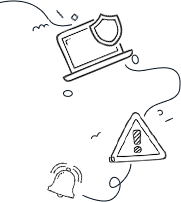Introduction
Let’s face it: if you’ve ever used the same password for multiple accounts, you might as well be handing out your Social Security number at a party! You’re not alone—over 80% of account breaches are straight-up party crashers that stem from weak and repeated passwords.
Hackers are like that one friend who shows up uninvited to every gathering. With billions of stolen passwords leaking onto the dark web every year, it’s like they’ve got their own VIP pass to your accounts. In fact, cyber baddies snagged 3.2 billion private credentials in 2024 alone!
It’s become a walk in the park for cybercriminals, who have ditched the guessing games. Instead, they now rely on automated attacks that test out stolen credentials across thousands of websites. This method is known as credential stuffing, and let’s just say it’s as easy as pie for these sneaky hackers to break into your accounts.
Why Does Credential Stuffing Work So Well?
People love to reuse passwords like kids love Halloween candy. Cybersecurity experts recommend using a password that’s longer than a grocery list and includes a mix of numbers, symbols, and letters in various cases. If your password looks like a dictionary exploded, you’re already on the right track!
Picture this: your email and password were exposed in a breach five years ago. If you’re still using that exact password—or God forbid, a slightly tweaked version—attackers can unleash their bots to check if it works on banks, social media, or that old job you might’ve forgotten about. Once they get past the digital bouncer, they can wreak havoc by draining accounts or selling your info on the dark web. And guess what? They can do all this without triggering security alerts, making them the shadowy ninjas of the internet!
Hundreds of millions of credential stuffing attacks happen every day. Protect that precious data of yours with some serious security and authentication moves!
How Can You Tell If You’re at Risk?
Imagine this: you’ve been using the same password for all your online escapades, and one day your inbox is flooded with login alerts from places you’ve never visited. Password reset emails appear like they’re auditioning for a spam reality show, but you’re left scratching your head—you didn’t ask for these! If bank transactions or messages pop up that you don’t recall sending, it’s clear you might be sharing more than just passwords—welcome to the world of credential stuffing!
Signs like these suggest your logins might be taking a vacation to hackerland. So how do you shield yourself from these credential stuffing attacks?
- Use a password manager. These encrypted vaults are like a personal safe for your credentials, keeping them strong and unique. Password managers can whip up complex passwords and store them for you, so you can retire that dog named “Password123” for good!
- Turn on multi-factor authentication (MFA) for that extra layer of security. Think of it as a bouncer at your digital club: even if hackers have the password, they still need the secret handshake!
- Stay vigilant! Regularly keep an eye on your accounts like a hawk. If you spot unusual activity, report it faster than you’d hit the snooze button on a Monday morning. Early detection is key!
Supercharge your security by using unique passwords for every account. If one site takes a hit, reusing a password is like using the same umbrella during a rainstorm—you’re bound to get soaked! Unique passwords drastically minimize your chances of falling victim to credential stuffing.
Enabling MFA can slash your risk of breaches by 99%. But beware: hackers can play tricks and intercept or steal those one-time codes and PINs, just like a magician pulling a rabbit out of a hat. Instead, consider biometric authentication, which is just a fancy way of saying your fingerprint or face ID keeps the magic safe. Authentication apps also add that extra sprinkle of protection with temporary codes generated through a mysterious side program!
Conclusion
Credential stuffing is automated, relentless… and completely avoidable. The best defense? Stop reusing passwords!
By adopting strong password practices and leveraging nifty tools like password managers and MFA, you can protect yourself from this lurking threat. Use complex credentials and change them up every couple of months—keeping the same password for years is just as dangerous as walking into the shark tank wearing a meat suit!
Most importantly, keep in mind that cybersecurity starts with you! Take proactive steps to secure your digital life and stay one step ahead of those pesky cybercriminals.
The post Understanding Credential Stuffing: The Dangers of Reusing Passwords appeared first on .




